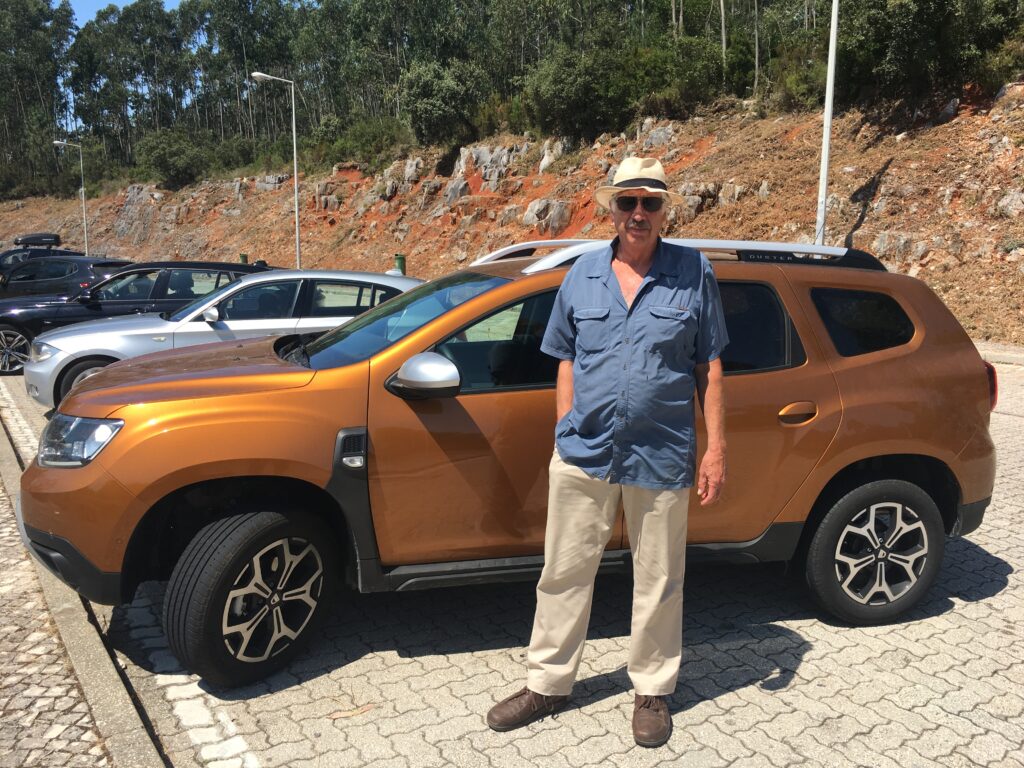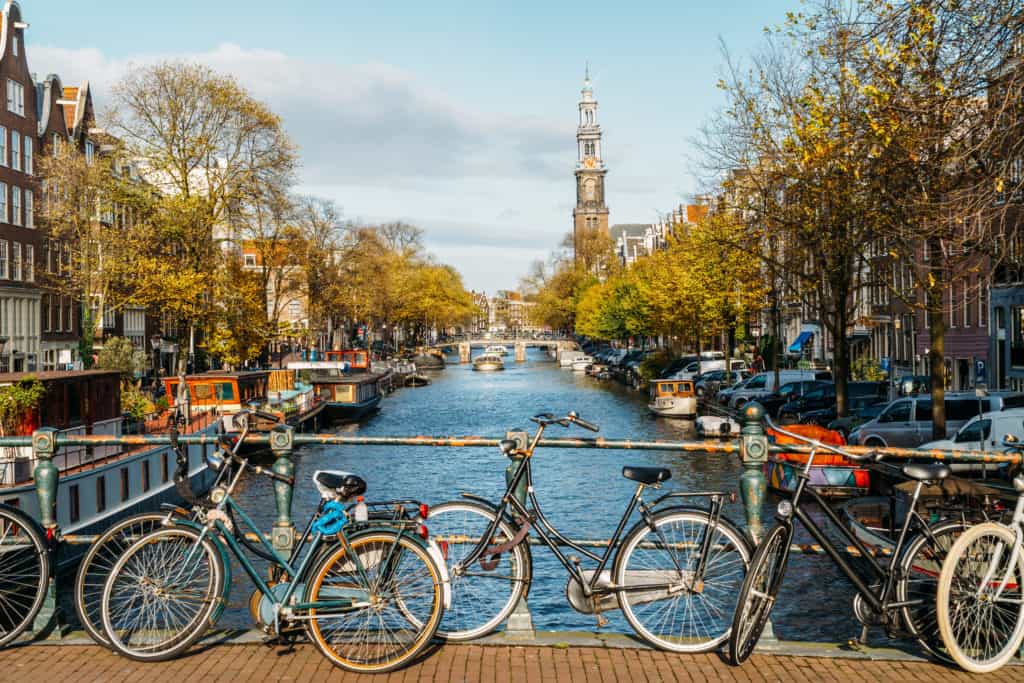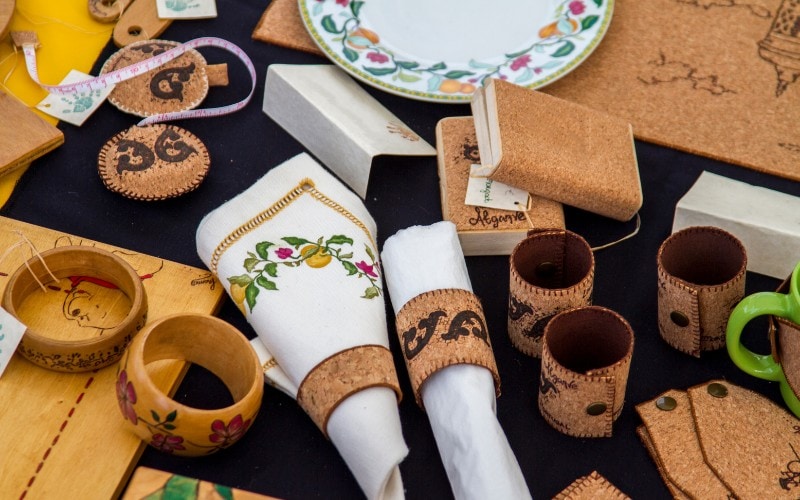Smart Ways to Travel Green
Artsy Traveler contains affiliate links for products and services I personally use and can happily recommend. As an Amazon Associate, I earn from qualifying purchases. Please read the Disclosure for more information. If you make a purchase through these links, at no additional cost to you, Artsy Traveler earns a small commission. Thank you!
Traveling green is a challenge in these days of high fuel costs and encroaching climate change. Can you enjoy traveling while still doing your part to reduce greenhouse gasses, help local economies, and lessen your impact on the planet?
Let’s face it. The greenest thing you can do for our precious planet is to stay home. On the other hand, traveling usually (not always) helps local economies and it also enriches your life. It’s a trade-off for sure.
I choose to continue traveling. But I also choose to seek out smart ways to travel as greenly as possible. I share my suggestions for green travel in this post.

Traveling Green: Transportation
Carbon Offsets
Search online for companies that offer carbon offsetting programs. Visit a website such as Atmosfair and use the tools to calculate the greenhouse gas emissions generated from your trip. Then pay the offset company the amount required to reduce emissions elsewhere in the world by funding offset renewable energy projects worldwide.
On the Plane
I shudder at the amount of garbage produced on planes. The flight attendants patrol the aisles armed with massive plastic bags into which we chuck plastic glasses and the remains of meals consisting of more packaging than food. It’s discouraging in this day and age.
What to do?
- Reduce some of the waste by taking your own water bottle onto the plane. Empty it before security and then fill it up before you board. You can then say no when the attendant offers you a plastic glass full of water and ice.
- Instead of accepting the plastic tray laden with plastic-wrapped everything, purchase food in the airport that is minimally packaged.
- Take your trash off the plane and dispose of it in the recycling bins usually provided in the airport. You might not want to take the remains of your dinner, but you could stash a few plastic cups in a bag to carry off. Every little bit helps.
Fortunately, some airlines are getting on board with green travel. Before you buy your plane ticket, research the greenest airlines.
On the Road
Following are some suggestions for how to reduce waste while you’re on the road.
- Take along a collapsible insulated food bag. While traveling, fill it with food and drinks you’ve bought in local grocery stores. Instead of purchasing overpriced packaged foods at the rest stop cafés, you have the fixings for fresh sandwiches to enjoy at the nearby picnic tables.
- Don’t leave home without your trusty Swiss Army knife to cut hunks of cheese from the unpackaged block you bought in the market, spread butter on your fresh baguette, and open your bottle of wine. Just make sure you pack the knife in your checked bag to avoid confiscation at security.
I still use—and treasure—the Swiss Army knife my dad bought me for my 18th birthday before I set off on my first solo trip to Europe.
On the Train
Travel green by taking the train as often as possible.
Also consider buying freshly made sandwiches with minimal packaging at delis in the train stations to take on board with you. Then you won’t need to buy the plastic-wrapped and painfully over-packaged food available in the dining cars and from the trolleys.
In the Car
Zipping around your chosen destination by car is not a green activity. We generally rent cars to transport paintings to exhibitions and because Gregg was a racing car driver in a past life (or at least he drives like one).
We enjoy the freedom, the independence, and the flexibility of car touring.
That said, we’re well aware of the environmental impact of car travel. Here are some suggestions to compensate.
- Rent the smallest car that meets your needs. You’ll save gas and will find driving in small towns and villages easier.
- Check out options for renting a hybrid car. Many providers, such as Hertz, rent hybrid cars.
- When you’re driving, maintain a reasonable speed. On some freeways in the EU countries, particularly Germany, the speed limit is higher than you’re likely used to at home. But just because you can go fast doesn’t mean you should!
TIP: Always drive at or just below the speed limit. More times than I care to admit, we’ve received speeding tickets months after we arrived home. The fines are hefty. Also, never drive in the far left lane unless you are passing. Cars will come up behind you at dizzying speeds and flash their lights. Get out of the way!

Staying Green: Accommodation
Travel green by staying in small, locally run hotels and bed-and-breakfasts that have the added bonus of directly helping the local economy.
Choosing Hotels
Consider hotels that advertise environmental policies and green initiatives. If two properties are comparable, choose the one that lists itself as a green hotel with initiatives such as recycling, rainwater harvesting, energy efficient lighting, and so on.
If possible, find hotels located in LEED Certified buildings and that are also certified green.
Housekeeping
These days, most hotels and guest houses ask that you hang up your towels if you don’t need them replaced. I don’t wash my towels every day at home, so why expect clean towels daily while on the road?
You’re also unlikely to have your sheets changed daily which is all to the good. If necessary, ask that your towels be changed every two or three days and your sheets weekly for long stays.
Here are other suggestions for traveling green:
- In your room, reduce waste by avoiding the dreaded single-use coffee pods. Go to a café, order a real coffee that comes in a real coffee cup (not take-out!), and experience your destination like a local.
- Leave the bottles of water for the next guest and avoid raiding the mini bar, with its tiny, eco-unfriendly bottles and cans. Keep a bottle of wine (screw top variety) or a few beers stashed in your food bag.
- Bring your own shampoos and lotions in reusable bottles so you’re not tempted to use the single-use soaps and shampoos provided in some hotels. I like hotels that have large multi-use dispensers for shampoo and body wash. Unwrapping a soap to use once or twice knowing it will be chucked borders on criminal.
- Pack a travel soap dish, preferably one made of recycled plastic, and put a big bar of soap in it. Chances are, the bar will last your entire trip. If you travel for 21 days, you save the landfill from 21 small bars of soap. That’s a lotta soap.
Back in the 1970s when I started traveling, I always packed my own soap dish because soap in hostels and even bed-and-breakfasts was unheard of. Time to go back to our former, eco-friendly ways!
Enjoying this post? Subscribe to Artsy Traveler to Receive Valuable Travel Tips and Your FREE Guide: 25 Must-Do Artsy Traveler Experiences in Europe for 2025

Energy Use
In many hotels, the lights in hallways are turned off until you enter them. Back in the day, you had to grope for a light switch. Nowadays, most are equipped with motion sensors so the lights come on as soon as you walk into the hallway.
When you enter your room, you’ll generally find that the power is off. Put your room key card into the slot in the door to turn on the electricity. When you remove the card and leave the room, the power switches off again.
Just remember that if you want to charge your devices while you’re out, they won’t get, um, charged. I’ve been caught out on that more than once.
Also save energy by keeping the air conditioning at a reasonable level and taking short showers.
Home-Basing
Staying put is eco-friendly if you do actually stay put! However, home-basing can involve a considerable amount of driving if you decide to do all your local sightseeing by car.
When choosing a place to home-base, consider what sightseeing you’re planning on doing. If each day, you’ll be driving for hours, you may want to rethink the home-base idea. We choose to home-base when we know we’ll be staying put in the area for most of the time.
In general, you save both money and resources when you choose home-basing over point-to-point traveling. You also benefit the local economy by shopping in local markets and eating in local restaurants and cafés.
Recycling
Most hotel rooms provide recycling bins. Help out housekeeping by sorting your trash into the appropriate bins.
A big advantage of staying in apartments or houses when you travel is that some of your trash can be recycled. We’ve been surprised to discover that many European countries offer fewer recycling options than we have at home. You’ll always find places to recycle wine bottles, but sometimes that’s about it.

In an apartment or house, you’re able to focus on the reduce and reuse parts of the Reduce, Reuse, Recycle trifecta.
Exploring Green: Sightseeing
With a bit of planning, green sightseeing is not only possible but also pleasurable. Here are my suggestions.
Walking Tours
Instead of opting for the gas-guzzling Hop-On, Hop-Off bus tours (which do have their place), consider joining walking tours to explore new cities.
I’m a huge fan of walking tours! Your carbon footprint is almost nil, you learn lots of quirky and intriguing things, you see places you’d never see from a bus, and you’re likely to meet some interesting fellow travelers.
I enjoy walking tours geared to specific interests, such as theater or art or architecture. Search for walking tours online. Many are free, although you are expected to tip the guide.
Here are a few cool-looking artsy walking tours of Paris that you can book through GuruWalks, and they have plenty more in other cities worldwide. I’ve taken some of their tours and highly recommend them.
Bike Rentals
Cycling’s the way to sightsee in many places, particularly cycle-friendly cities like Amsterdam and Copenhagen. Take advantage of cycle stations to rent a bike for an hour or longer.
If you’re really ambitious, consider ditching cars and trains altogether in favor of a cycling or walking holiday. Many countries have vast networks of cycling trails to explore.

Coming soon: Guest posts on cycling and walking holidays in Europe!
Public Transit
Green travel and public transit go hand in hand.
Instead of hailing a taxi, hop on a bus. If you’re not sure how to purchase tickets, ask at your hotel. Bus tickets are usually available at local convenience stores or at kiosks near the bus stops.
Subways are easier to use because you buy your tickets from kiosks in the subway and have access to large fixed maps—often color-coded and interactive—to figure out your route. Subways also get you from A to B quickly.
But let’s face it. You don’t travel to stare at other people’s armpits in hot, dark, sweaty subways. I used to favor subways because they were easier to figure out, but lately, I’ve made the effort to understand and use the local bus system, especially in big cities like Paris and London.
You get to relax and watch the world go by. If you’re in London, rattle along on the top level where you’ll enjoy a bird’s-eye view of the crowds surging below. Subways may be fast and efficient, but busses are fun.

TIP: On most European busses, stamp your ticket in the machine when you board the bus and again when you get off. Watch the locals to see what they do and then do the same. Usually some kind soul will help you. You’ll quickly get the hang of bus travel, and then you’re set for some awesome sightseeing—and helping other newbies!
Taxis and Ubers
I’m not saying never take taxis or ubers. I usually take a taxi from the train station to my hotel unless the hotel is super close. I’m not keen on wrangling my suitcase—mid-size though it is—on and off a local bus when I’ve just arrived in a place and don’t yet know the lay of the land.
And definitely take taxis or ubers when your safety or health may be compromised by walking or taking public transit.
On a recent trip to Amsterdam, we emerged from a fabulous lunchtime concert at the Concertgebouw (great artsy sightseeing thing to do – see the Netherlands page) and into a streaming rain. At first, we thought we’d save money and brave the rain for the entire 20-minute walk back to our bed-and-breakfast (a fabulous place on the Herengracht).
After two minutes of walking, I was struck by a Sensible Thought. Walking home might save the planet and our money, but at what cost? It was the second day of a six-week trip to Europe. Both of us are, um, not young.
If one or both of us came down with a cold, we’d be doomed to days of misery.
I weighed that sobering possibility against the cost of a taxi (about 15 euros, as it turned out), and stuck out my arm to flag down a fortuitously passing cab.
Comfort over budget!
Note that Uber is not active in all European cities, but you will find taxi apps most places. In Athens , for example, Uber went directly to a taxi service. The benefit of using an uber over a taxi is that you know in advance the cost of the trip.
Museums and Concerts
Unless you can read the language, refuse the programs offered at concerts. Why waste paper when all you’ll do is look at the pictures?
In museums, leave the paper maps at the information desk and download the museum’s app. Small museums may not have apps, but large museums, such as the Louvre, National Gallery, and Rijksmuseum, do.
I’m really into using these apps when I tour a museum. I can usually find a particular painting more quickly via the app than by staring at maps that are often confusing.

Guidebooks
Load guidebooks onto your e-reader, Smartphone, or tablet. Some guidebooks, such as those by Rick Steves, also include helpful audio apps for visiting specific sites.
I enjoyed listening to Rick Steves explain the Sistine Chapel to me on a recent visit, although I did get a crick in my neck.
Another useful app for finding your way around is Google Maps. Use this app to find local restaurants and check reviews. No more carrying around a paper guidebook!
And if you do take a guidebook, take only the portions you need for your trip.
Before every trip to Europe, I buy one or more guidebooks (usually Rick Steves – I’m a big fan as you’ve probably guessed) and cut out the sections I want. I reduce my luggage weight (okay, not by much but every little bit counts), and I don’t have to carry a whole book with me on my daily meanderings.
Tour Operators
Pay attention to information on the tour operator’s website about sustainable travel initiatives and other environmental activities.
Also, seek out independent local guides. You’ll gain plenty of personal insights about the destination while also supporting the local economy.
Buying Green: Shopping
Say No to Receipts
Unless you’re traveling for business and your accountant wants you to keep paper receipts, either say no to receipts or have them emailed if the option is offered. All those bitty bits of paper add up, only to eventually be thrown away.
An exception is when you need a receipt to claim the V.A.T. refund at the airport before you leave for home. Learn more about tax-free savings and getting V.A.T. refunds on sales taxes in this article.
Shop Local
One of my favorite things about traveling is shopping at local markets for fresh food. The packaging is usually less than in supermarkets, and the quality is often higher. You also get to interact with local people and even try out a few words of the local language—at least please and thank you and a few numbers!
Deux tomates, s’il vous plaît!
Shopping Bags
Gregg and I have a thing about shopping bags. At the beginning of every trip, we buy a cloth bag or two in the local supermarket, use them throughout our trip, and then bring them home.
Every time we go shopping at home, we pull out one of the bags we bought while traveling and enjoy memories of our trip. One of the bags we bought is stamped with photographs of Fayence in the south of France which always make me smile. It’s the small things that make life worth living!
Souvenirs
Avoid buying the cheap plastic souvenirs that clutter up most gift shops. The majority are not made locally and just add to clutter. Instead, focus on purchasing a few locally made, useful souvenirs.
In Portugal, for example, buy a high-quality purse made from cork (I love cork) instead of a plastic rooster statue. Roosters are a thing in Portugal.

I get more pleasure out of products that I can use when I get home compared to figurines and knick-knacks that just sit on a shelf, crying out for a dusting that never comes.
When you buy locally made crafts and artwork, you also support local artisans and artists—a very Artsy Traveler (and green!) thing to do.
Another green travel option is to take a picture of a souvenir. You keep the memory and you help save the planet at the same time. Win win!
But I do have one caveat and that is fridge magnets! Yes, they are tacky, probably not made locally, and ubiquitous. I use to turn up my nose at them. But lately, I’ve taken to picking up a fridge magnet to remind me of a cool destination or, even better, a favorite work of art. A fridge magnet is cheap, easy to carry, and colorful. Every time I open my fridge, I get to admire my growing collection of fridge magnets that remind me of our trips.
So yeah, I make an exception for fridge magnets!
Being Green: Personal Products
Skin Care
Purchase eco-friendly sunscreens and insect repellants, particularly when you’ll be swimming in protected waters or eco-sensitive environments.
Packing
Consider packing light. I favor a mid-size suitcase, but I acknowledge the benefits of traveling with a carry-on size bag. With a small bag, you’ll likely take fewer taxis and walk more.
Gadgets
Whenever possible, purchase rechargeable batteries for battery-operated gadgets, such as your camera.
Eating Green: Food
Restaurants
Many countries are getting on board with plant-based cuisines. Back in the day, when it came to meal time, traveling in many parts of the world could be tough for vegetarians and almost impossible for vegans. Fortunately, this situation is rapidly changing. In cities, you’ll almost always find restaurants with excellent vegetarian and vegan options.
Select dishes that are locally sourced whenever possible. Ask your server for suggestions. Choosing small, “mom-and-pop” restaurants instead of large chains full of tour groups is generally a good and green thing to do and far more interesting!
Straws
Tuck one of those fancy new reusable stainless-steel straws in your purse or backpack and forgo disposable plastic straws.
Coffee
Avoid buying take-out coffee. You’re on vacation! Get your coffee in a proper cup, pull up a chair in a sidewalk café, and watch the world go by.
Conclusion
Make finding new ways to travel green a fun part of your trip.
Every time you use your own soap and leave the packaged soap unopened, or buy a slab of cheese wrapped in paper from a market, or take a walking tour, or choose a small hybrid car over a gas-guzzling SUV, you’re doing your part to help keep our beautiful planet healthy and safe for future generations.
Happy traveling!
Do you have suggestions for traveling green? Please share them in the comments.
For more Travel Smart tips, check these posts:
